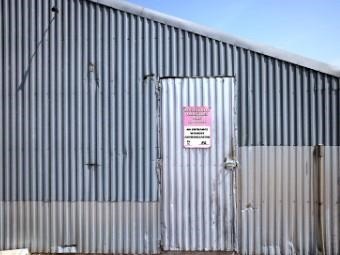Water needs to be clean. Excessive heat and stagnant water can cause blue-green algae growth, which is toxic to livestock, wildlife, and humans.
Avoid stressful handling of livestock. If necessary, only do so in the early morning or later in the evening. Ensure animals in barns or sheds have proper ventilation and air circulation. Provide shade to animals kept outside, if possible.

WSU Extension experts advise animal owners to provide shade to animals kept outside, if possible.
In times of heat stress, owners may need to reduce energy intake from feeds such as grains and concentrates, and to increase fiber in the diets of animals such as 4‑H steers and lambs. This can help mitigate heat stress.
In addition, endophyte-infected forages, such as fescue or other forages or crop residues containing endophytes, should be avoided, as they may exacerbate heat stress in cattle.
Heat stress is made worse by high humidity, and animals find it more difficult to cool off in humid conditions. While the Inland Northwest does not experience high humidity during summer, the marine environment west of the Cascades is more prone to higher humidity. East of the Cascades, areas of irrigated farmland are an exception and can experience higher humidity.
During and following heat stress, watch for signs of respiratory disease and digestive disorders in livestock. Wide temperature swings of 40 degrees or more between day and night can predispose livestock to infection.
High temperatures with low humidity also increase the likelihood of wildfires. Home- and livestock owners should make an emergency plan for disaster preparedness.
Source : wsu.edu